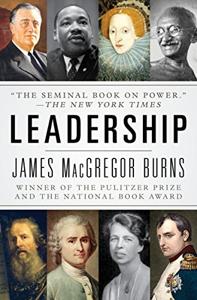
Want to learn the ideas in The Five Dysfunctions of a Team better than ever? Read the world’s #1 book summary of The Five Dysfunctions of a Team by Patrick Lencioni here.
Read a brief 1-Page Summary or watch video summaries curated by our expert team. Note: this book guide is not affiliated with or endorsed by the publisher or author, and we always encourage you to purchase and read the full book.
Video Summaries of The Five Dysfunctions of a Team
We’ve scoured the Internet for the very best videos on The Five Dysfunctions of a Team, from high-quality videos summaries to interviews or commentary by Patrick Lencioni.
1-Page Summary of The Five Dysfunctions of a Team
Overview
Working with other people is difficult. To make it easier, you need to work hard at making your team better and more effective. Teams are made up of imperfect individuals who have their own selfish goals, so teamwork requires concerted effort by all members of the group in order for them to be successful.
Teamwork is a critical component of success. However, it’s not easy to get teams to work well together. One must understand the tools and principles that help with teamwork in order to be an effective team leader. For example, one should build trust within the team so members can have open discussions with each other about issues that affect them. It’s also important for leaders to set goals so everyone stays on track and focused on what needs to be done as a group. In addition, leaders need exemplify good teamwork themselves by working effectively with their teams instead of just telling others how they should work together.
This book answers many questions about teamwork and how to foster it. It is important for teams, even if they have great individuals, to focus on teamwork because trust is crucial. Trust requires team members to share weaknesses and mistakes openly with each other. Team members should be encouraged to focus on the team’s results rather than their own personal goals because of the importance of collaboration.
The following eight ideas are the key points of the book.
Big Idea #1: Teamwork is the ultimate competitive advantage; make it your top priority.
While it’s hard to define what makes a great team, there is one clear trait that most successful teams share. That is the ability for individual players to work together as a unit and achieve more than they could individually. This can be seen in basketball where two average teams will always beat an all-star team of individuals. So why do even talented players fail when working separately?
People who work in a company waste time and energy on politics, which results in low morale and less focus on performance. This leads to the loss of valuable employees who have had enough of the politics.
A company called DecisionTech was once seen as one of the most promising companies in Silicon Valley, but it’s situation quickly deteriorated. After having a top-tier team and attracting more investors than most start-ups would dare to dream of, they were still struggling to find customers.
Why did the company have a problem with teamwork? The root cause was that people who were ambitious and successful didn’t work well together.
When Kathryn Peterson became the CEO of DecisionTech, she decided to focus on teamwork even more than hitting immediate financial targets. By doing so, she helped get the company back on track.
In order to understand teamwork, we need to know why trust is the basis of all teamwork.
Big Idea #2: All teamwork is based on trust, and trust is built when team members are open about their weaknesses and mistakes.
Trust and respect are the key to any relationship. They’re also important in teamwork, because they build a strong foundation for collaboration. Why?
To have a successful team, members must be able to trust one another. When this is the case, they will openly discuss issues with each other without fear of being ridiculed or criticized. This leads to finding the best solutions quickly and efficiently. Without trust, important issues may be avoided because people are afraid of saying something wrong or offending others.
The departure of the head of sales at DecisionTech is an example of how trust can foster open communication. A replacement was needed, and Carlos Amador suggested he take the position. The rest of the team felt that other team members had more experience and were better suited for the job, so they voiced their opinion to Carlos. He accepted this feedback without being offended, and decided to let a more experienced candidate handle it instead.





